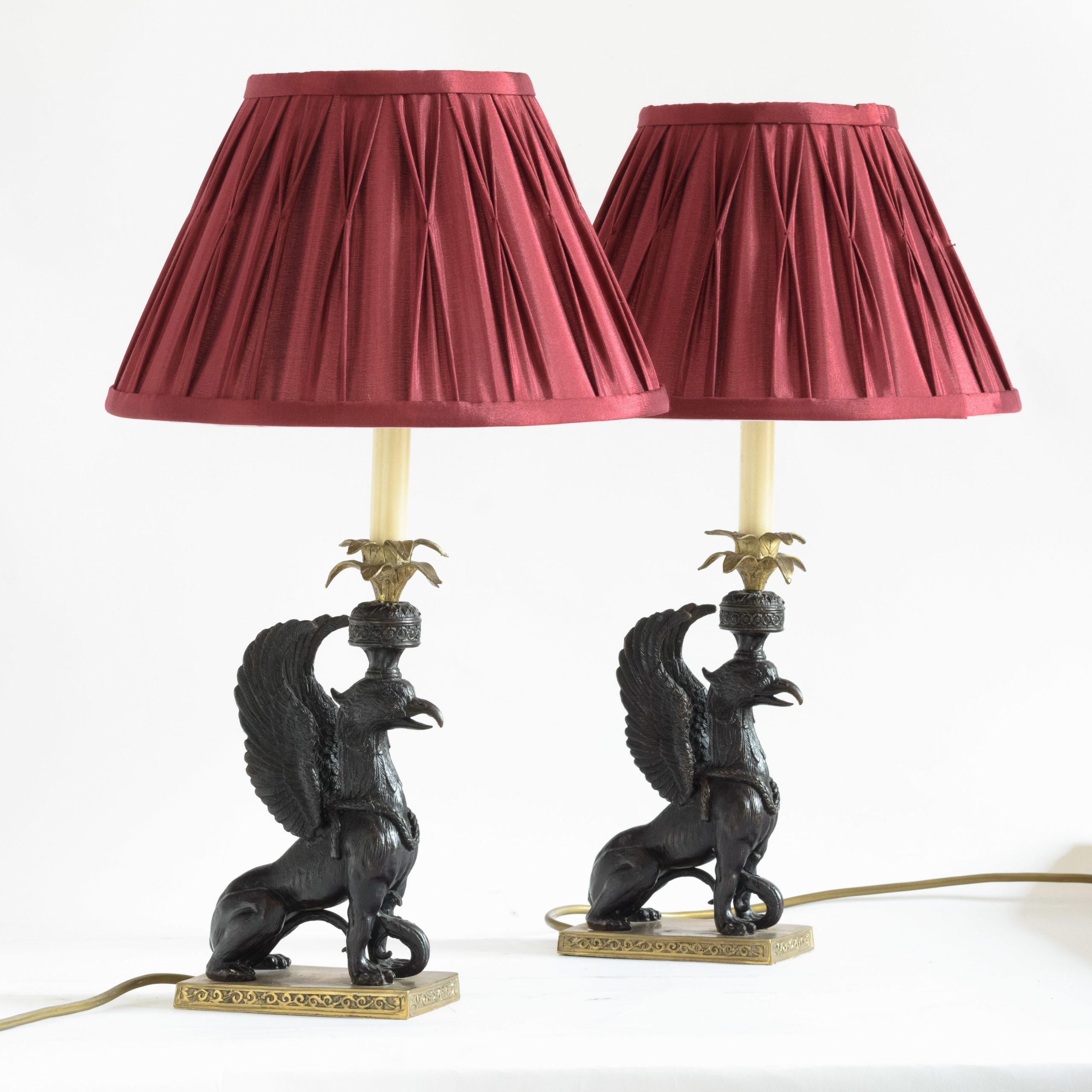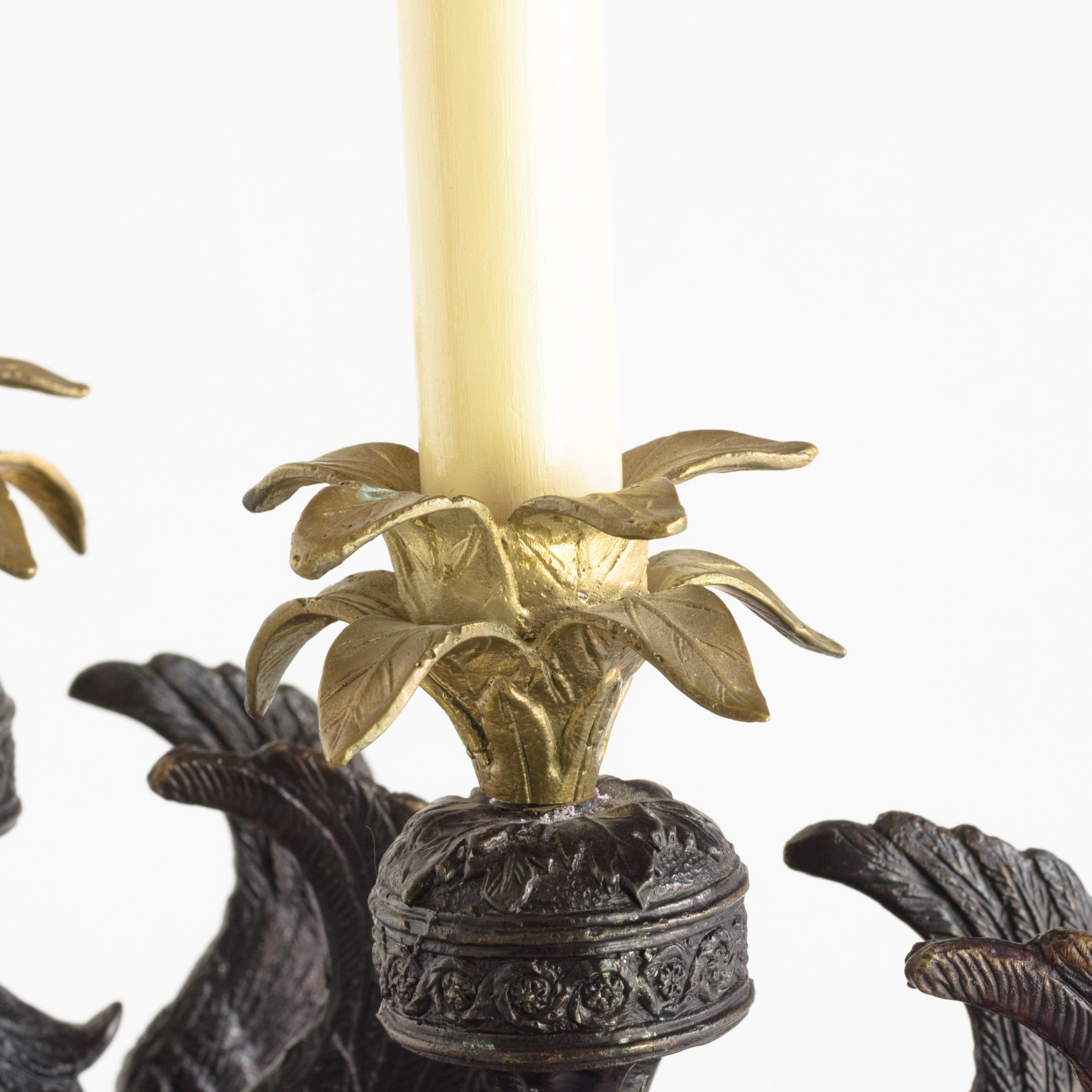No products in the basket.
Archived Stock - This item is no longer available
A pair of winged griffin bronze and brass table lamps,
20th Century, after the 18th Century originals by Sir William Chambers,
the seated winged beasts, each supporting a foliate sconce and raised on a guilloche moulded rectangular plinth, sold with shades.
SOLD OUT
Out of stock
The design of these griffin candlesticks is attributed to Sir William Chambers (1726 – 1797), court architect to George III. Their design appears in Chambers’ third edition of Treatise on the Decorative Parts of Civil Architecture, 1791 in which he describes the plate as containing 'ornamental utensils, designed for the Earl of Charlemont, for Lord Melbourne, and for some decorations for my own house'. A presentation drawing by his pupil between 1764 – 71 John Yenn (d. 1821) predating the Treatise shows an early version of the design with some minor variations.
Sir William Chambers was a Scottish architect whose practice was a significant rival to that of his countryman, Robert Adam (1728-1792). Born in Gothenburg, Sweden, where his father was a merchant, the young Chambers found employment with the Swedish East India Company. He studied in Paris under the architect Jacques-François Blondel (1705-1774) and with Charles-Louis Clérisseau (1721-1820), the influential architectural artist and antiquary, and finished his education with a five-year sojourn in Italy before setting up as an architect on his own account in London in 1755. It was during this time in Europe that Chambers surely picked up his predilection for the Franco-Italian style. His design for these candlesticks was possibly adapted from the seated sphinx that Chambers would have undoubtedly encountered numerous times whilst in Rome.
An introduction to the Royal household by the then Earl of Bute won Chambers the post of tutor of architecture to the Prince of Wales, the future George III. Chambers's reputation was further increased by the recurring appearance of his Treatise on Civil Architecture, first published in 1759 and repeated until the end of the 18th century. Among the most important work undertaken by the firm was the construction of the imposing Somerset House in London and their additions to Blenheim Palace including the Grand Saloon.
LASSCO currently has for sale the huge rusticated stone doorcase from Chamber’s London residence in Berners Street W1 – of his own design, dated to 1769 - ultimately brought down by enemy action in World War II.(See 43528). The paired griffins are seen in other work from the same period - as in a plaster cast reproduced at LASSCO (See 42875)
As part of the Blenheim commission Chambers supplied decorative items of the highest quality for the interiors of the palace including a pair of these candlesticks. It is thought that these would have been executed by Diederich Nicolaus Anderson rather than Mathew Boulton.
There are just six known pairs of original griffin candlesticks. One pair sold as part of a Private Collection at Sotheby’s London in 2015 (£68,750). One pair sold at Christie's, New York, 19 April 2001, lot 250 ($116,500); and another Christie’s, London, 12 November 1998, lot 5 (£155,500); the Blenheim pair already mentioned above; a fifth pair with Egyptian porphyry bases with the National Trust, Hinton Ampner House, Hampshire and finally a pair that sold at Sotheby's Florence, 6-7 April 1987.













